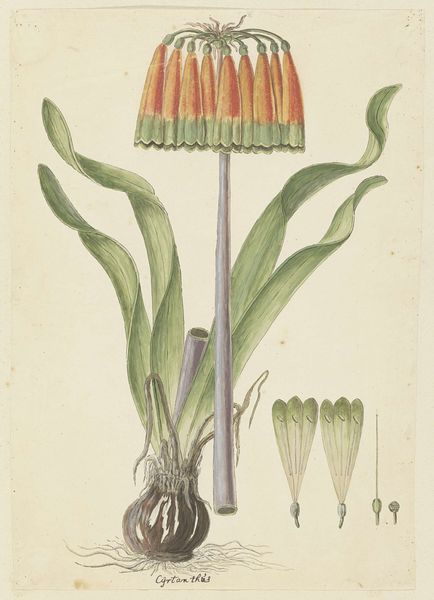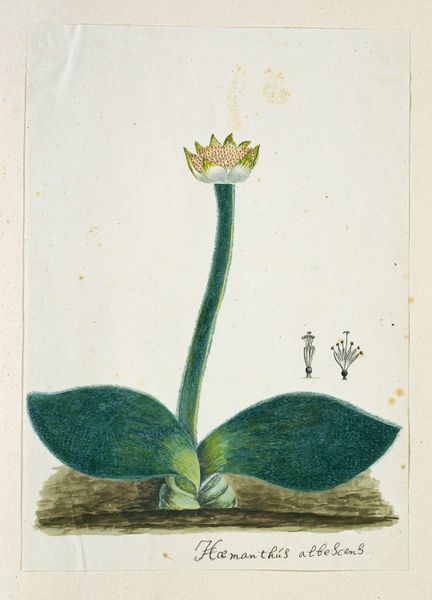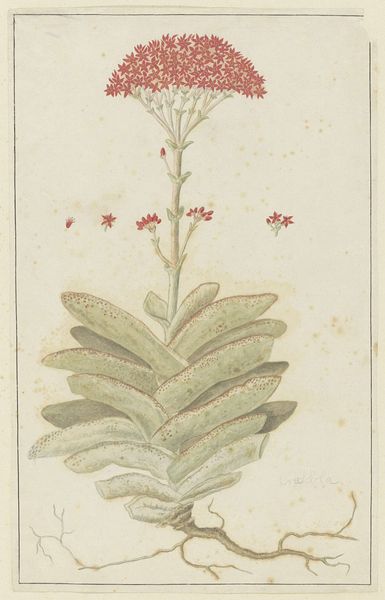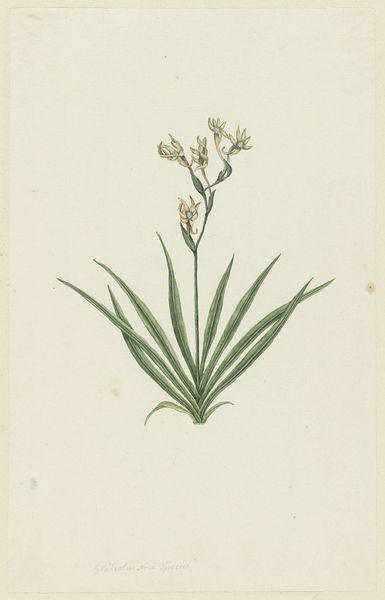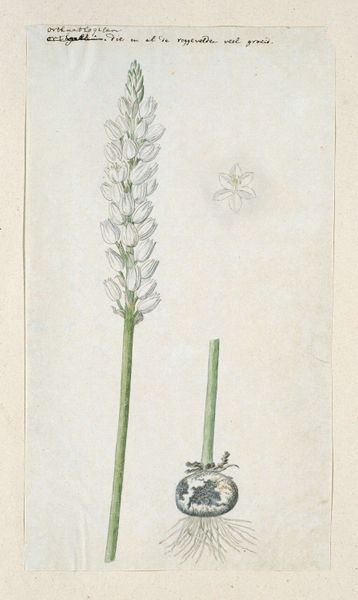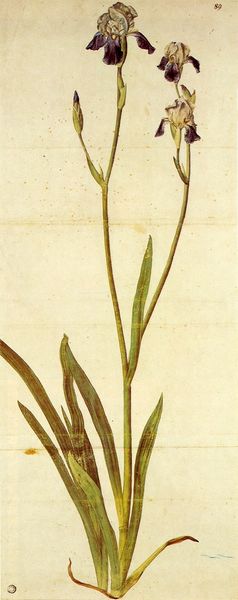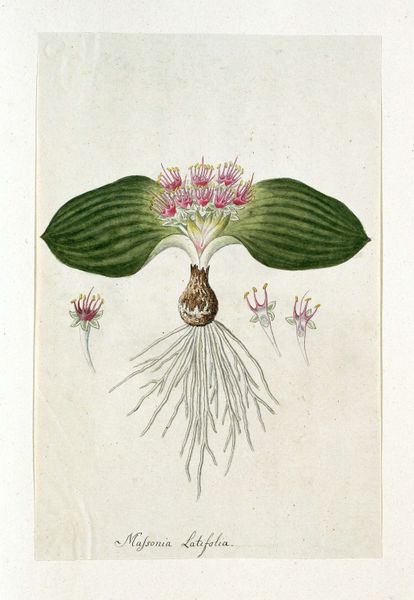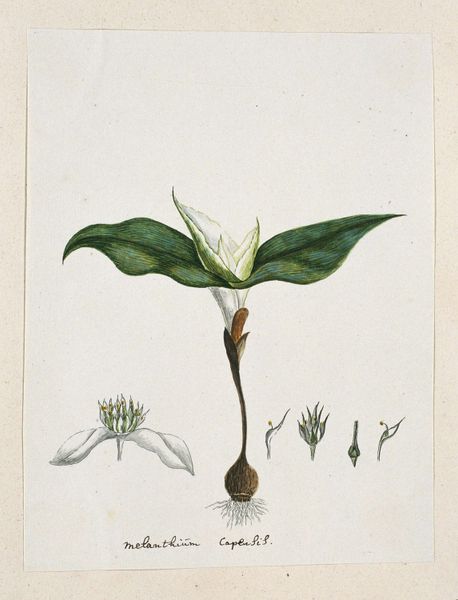
drawing, plein-air, watercolor
#
drawing
#
plein-air
#
botanical illustration
#
watercolor
#
botanical drawing
#
watercolour illustration
#
botanical art
Dimensions: height 660 mm, width 480 mm, height 550 mm, width 267 mm, height mm, height mm
Copyright: Rijks Museum: Open Domain
Curator: The delicacy of this drawing immediately strikes me. Robert Jacob Gordon, likely sometime between 1777 and 1786, captured this Sand-lily with what appears to be watercolor. It's really quite beautiful. Editor: I agree, there’s something both precise and strangely ethereal about it. The bulb feels grounded, even earthy, but then this cascade of blooms like some sort of floral chandelier emerges. What sort of materials were typically available for botanical studies in the late 18th Century? The paper itself tells a story. Curator: Certainly. You can see the fine strokes and blending indicative of high-quality brushes available, although it's fair to assume varying grades of paper influencing the pigment absorption at the time. The scientific endeavor met the capabilities of artisan crafting with paper and pigments. It all shaped botanical art! Editor: Speaking of shaping, look at how the artist uses the imagery. The droop of those salmon-pink blossoms reminds me a bit of funerary art, strings of teardrops almost. There's an element of mourning embedded perhaps? Given that this piece captures detail suitable for the burgeoning field of taxonomy, how do the symbolism of flowers integrate with emerging natural sciences? Curator: I wonder if he perhaps did the sketches "en plein air" given the tags on the object. It lends credence to a field based method and perhaps it speaks more to immediate representation. Editor: Even if drawn "en plein air," there’s no reason the cultural language surrounding flowers at the time wouldn’t seep into Gordon’s aesthetic choices. Color carries such weight—the muted green leaves juxtaposed with these almost flesh-toned petals. What stories were attached to that colour in the cultural mind? Curator: That's a point. Though to understand it fully, perhaps looking at the pigment analysis might unlock other cultural implications relating to commerce. Did that hue come at great cost? Where were its components sourced from? Editor: Always back to production, eh? It's a fair point, actually. It pushes me to question, What did it cost to see beauty this way? Curator: It’s not just cost! Understanding material practices grounds what sometimes drifts into heady interpretations of intent. Editor: An insightful complement – looking again it opens another world and this helps to reconsider its legacy, I appreciate it!
Comments
No comments
Be the first to comment and join the conversation on the ultimate creative platform.
